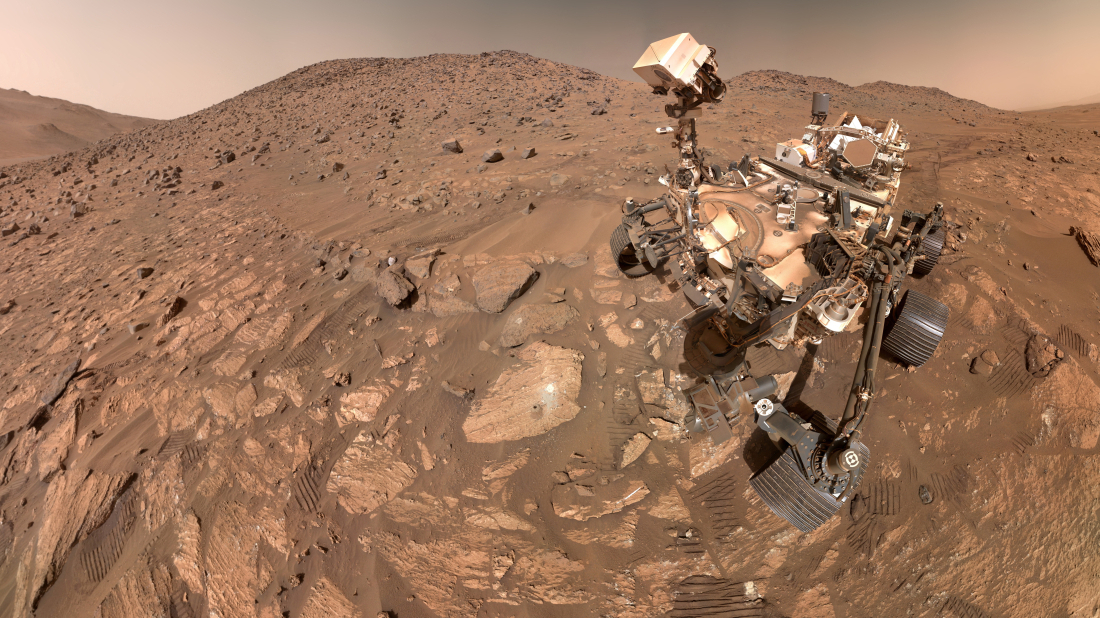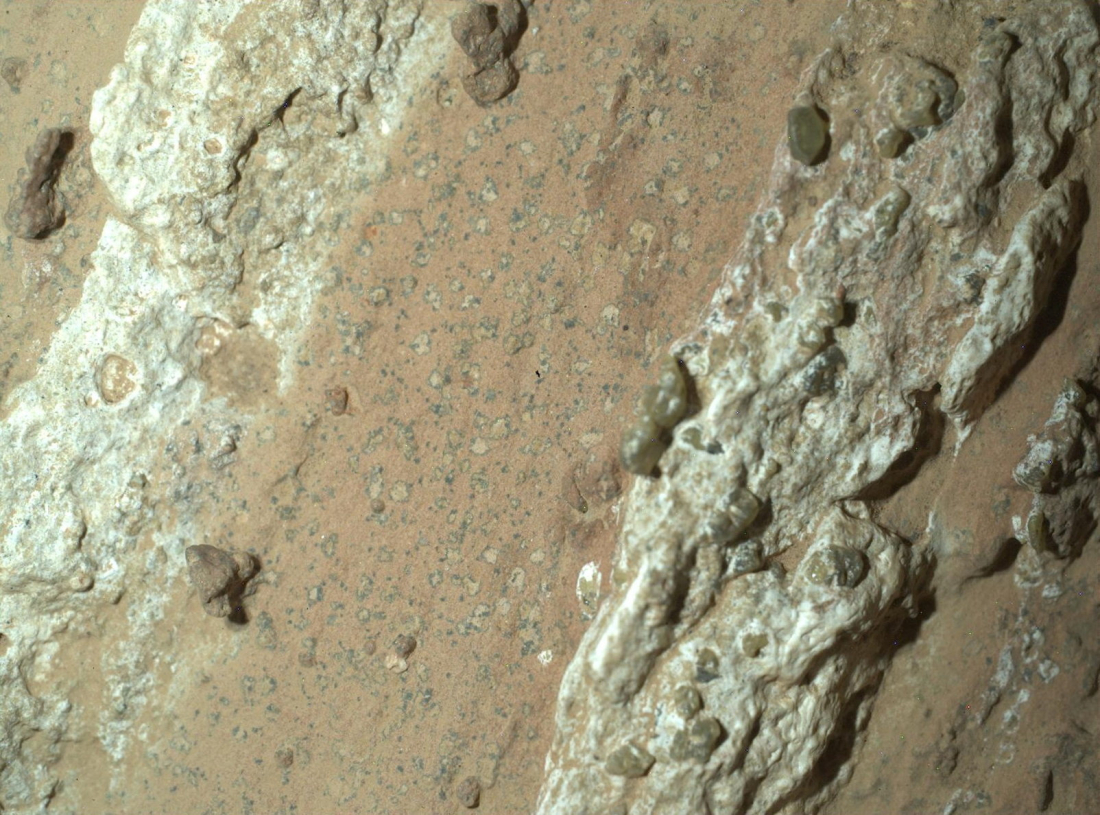India-Pakistan ties: Another year on edge
The long-standing rivalry between India and Pakistan over Kashmir reached a dangerous peak in 2025, as missile strikes, drone warfare, and rapid milit...

A sample collected by NASA's Perseverance rover from rock formed billions of years ago in a lake on Mars contains potential signs of ancient microbial life, according to scientists. However, the minerals found in the sample could also form through non-biological processes.
This discovery, detailed in research published on Wednesday, is one of the strongest pieces of evidence yet suggesting that Mars may have once supported life.
Since landing on Mars in 2021, the rover has been exploring Jezero Crater, located in the planet's northern hemisphere, which was once flooded with water and contained an ancient lake basin. Perseverance has been collecting rock samples and regolith, which it then analyses using its onboard instruments.
The newly analysed sample, known as the Sapphire Canyon sample, was obtained from the Bright Angel rock formation, which is composed of fine-grained mudstones and coarse-grained conglomerates. These are sedimentary rocks made up of gravel-sized particles cemented by finer sediments.
Joel Hurowitz, a planetary scientist from Stony Brook University and the lead researcher of the study published in Nature, said that a "potential biosignature" was identified in the ancient sedimentary rocks. This took the form of two minerals that seemed to have formed through chemical reactions between the mud of the Bright Angel formation and organic matter in the mud: vivianite, an iron phosphate mineral, and greigite, an iron sulfide mineral.
Hurowitz explained that these reactions likely occurred soon after the mud was deposited on the lakebed. On Earth, similar reactions—where organic matter and chemicals in mud form minerals like vivianite and greigite—are often driven by microbial activity. These microbes consume the organic matter and produce these minerals as a byproduct of their metabolism.
However, Hurowitz was cautious, stating that while this could be a potential biosignature, it is not definitive. He pointed out that chemical processes unrelated to biology can also produce similar reactions, and these cannot be ruled out based on the rover's data alone.
Mars was not always the barren planet it is today; it once had liquid water on its surface. Scientists believe microbial life could have existed in Jezero Crater, as river channels likely spilled over the crater's walls and formed a lake over 3.5 billion years ago.
The Sapphire Canyon sample was collected in July 2024 from rocky outcrops at the edges of Neretva Vallis, an ancient river valley that formed as water flowed into Jezero Crater.
This sample provides a new example of a potential biosignature that researchers can study to determine whether these features were created by life or if natural processes mimicked biological activity. Hurowitz added that future research would generate testable hypotheses to assess whether biology was responsible for these features in the Bright Angel formation. If the sample is returned to Earth, further analysis could help confirm or rule out biological involvement.

A majority of Russians expect the war in Ukraine to end in 2026, state pollster VTsIOM said on Wednesday, in a sign that the Kremlin could be testing public reaction to a possible peace settlement as diplomatic efforts to end the conflict intensify.
Military representatives from Cambodia and Thailand met in Chanthaburi province on Wednesday ahead of formal ceasefire talks at the 3rd special GBC meeting scheduled for 27th December.
In 2025, Ukraine lived two parallel realities: one of diplomacy filled with staged optimism, and another shaped by a war that showed no sign of letting up.
It’s been a year since an Azerbaijan Airlines plane crashed near Aktau, Kazakhstan, killing 38 people. Relatives and loved ones mourn the victims, as authorities near the final stage of their investigation.
The White House has instructed U.S. military forces to concentrate largely on enforcing a “quarantine” on Venezuelan oil exports for at least the next two months, a U.S. official told Reuters, signalling that Washington is prioritising economic pressure over direct military action against Caracas.
South Korea’s special prosecutor has requested a 10-year prison sentence for former president Yoon Suk Yeol, accusing him of attempting to obstruct his arrest following his failed bid to impose martial law.
Japan's cabinet has approved a record-high $785 billion budget for the next fiscal year - including the largest allocation for defence spending ever.
Start your day informed with AnewZ Morning Brief: here are the top news stories for the 26th of December, covering the latest developments you need to know.
Missile development in North Korea is set to continue over the next five years. The country’s leader Kim Jong Un made the remarks during visits to major arms production facilities in the final quarter of 2025, the state news agency KCNA reported on Friday.
The United States carried out a strike against Islamic State militants in northwest Nigeria at the request of Nigeria's government, President Donald Trump and the U.S. military said on Thursday.
You can download the AnewZ application from Play Store and the App Store.

What is your opinion on this topic?
Leave the first comment